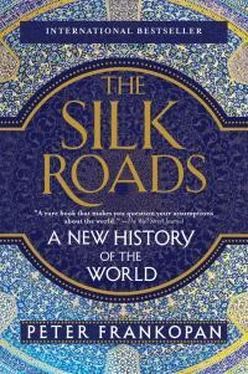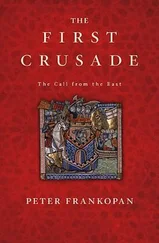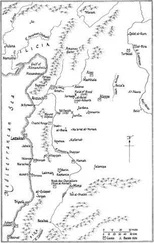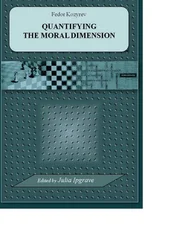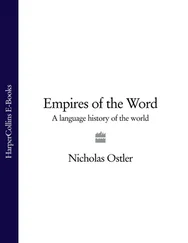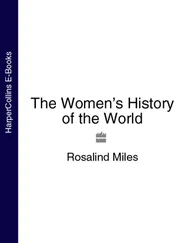The rise of Europe sparked a fierce battle for power—and for control of the past. As rivals squared up to each other, history was reshaped to emphasise the events, themes and ideas that could be used in the ideological clashes that raged alongside the struggle for resources and for command of the sea lanes. Busts were made of leading politicians and generals wearing togas to make them look like Roman heroes of the past; magnificent new buildings were constructed in grand classical style that appropriated the glories of the ancient world as their own direct antecedents. History was twisted and manipulated to create an insistent narrative where the rise of the west was not only natural and inevitable, but a continuation of what had gone before.
* * *
Many stories set me on the path to looking at the world’s past in a different way. But one stood out in particular. Greek mythology had it that Zeus, father of the gods, released two eagles, one at each end of the earth, and commanded them to fly towards each other. A sacred stone, the omphalos —the navel of the world—was placed where they met, to enable communication with the divine. I learnt later that the concept of this stone has long been a source of fascination for philosophers and psychoanalysts.14
I remember gazing at my map when I first heard this tale, wondering where the eagles would have met. I imagined them taking off from the shores of the western Atlantic and the Pacific coast of China and heading inland. The precise position changed, depending where I placed my fingers to start measuring equal distances from east and west. But I always ended up somewhere between the Black Sea and the Himalayas. I would lie awake at night, pondering the map on my bedroom wall, Zeus’ eagles and the history of a region that was never mentioned in the books that I read—and did not have a name.
Not so long ago, Europeans divided Asia into three broad zones—the Near, Middle and Far East. Yet whenever I heard or read about present-day problems as I was growing up, it seemed that the second of these, the Middle East, had shifted in meaning and even location, being used to refer to Israel, Palestine and the surrounding area, and occasionally to the Persian Gulf. And I could not understand why I kept being told of the importance of the Mediterranean as a cradle of civilisation, when it seemed so obvious that this was not where civilisation had really been forged. The real crucible, the “Mediterranean” in its literal meaning—the centre of the world—was not a sea separating Europe and North Africa, but right in the heart of Asia.
My hope is that I can embolden others to study peoples and places that have been ignored by scholars for generations by opening up new questions and new areas of research. I hope to prompt new questions to be asked about the past, and for truisms to be challenged and scrutinised. Above all, I hope to inspire those who read this book to look at history in a different way.
Worcester College, Oxford
April 2015
1
The Creation of the Silk Road
From the beginning of time, the centre of Asia was where empires were made. The alluvial lowlands of Mesopotamia, fed by the Tigris and Euphrates, provided the basis for civilisation itself—for it was in this region that the first towns and cities took shape. Systematised agriculture developed in Mesopotamia and across the whole of the “Fertile Crescent,” a band of highly productive land with access to plentiful water, stretching from the Persian Gulf to the Mediterranean coast. It was here that some of the first recorded laws were disseminated nearly 4,000 years ago by Hammurabi, King of Babylon, who detailed his subjects’ obligations and set out fierce punishments for their transgressions.1
Although many kingdoms and empires sprang up from this crucible, the greatest of all was that of the Persians. Expanding quickly in the sixth century BC from a homeland in what is now southern Iran, the Persians came to dominate their neighbours, reaching the shores of the Aegean, conquering Egypt and expanding eastwards as far as the Himalayas. Their success owed much to their openness, to judge from the Greek historian Herodotus. “The Persians are greatly inclined to adopt foreign customs,” he wrote: the Persians were prepared to abandon their own style of dress when they concluded that the fashions of a defeated foe were superior, leading them to borrow styles from the Medes as well as from the Egyptians.2
The willingness to adopt new ideas and practices was an important factor in enabling the Persians to build an administrative system that allowed the smooth running of an empire which incorporated many different peoples. A highly educated bureaucracy oversaw the efficient administration of the day-to-day life of the empire, recording everything from payments made to workers serving the royal household, to validating the quality and quantity of goods bought and sold in market places; they also took charge of the maintenance and repair of a road system criss-crossing the empire that was the envy of the ancient world.3
A road network that linked the coast of Asia Minor with Babylon, Susa and Persepolis enabled a distance of more than 1,600 miles to be covered in the course of a week, an achievement viewed with wonder by Herodotus, who noted that neither snow, rain, heat nor darkness could slow the speedy transmission of messages.4 Investment in agriculture and the development of pioneering irrigation techniques to improve crop yields helped nurture the growth of cities by enabling increasingly large populations to be supported from surrounding fields—not only in the rich agricultural lands to either side of the Tigris and Euphrates, but also in valleys served by the mighty Oxus and Iaxartes rivers (now known as the Amy Darya and Syr Darya), as well as in the Nile delta after its capture by Persian armies in 525 BC. The Persian Empire was a land of plenty that connected the Mediterranean with the heart of Asia.
Persia presented itself as a beacon of stability and fairness, as a trilingual inscription hewn into a cliff face at Behistun demonstrates. Written in Persian, Elamite and Akkadian, it records how Darius the Great, one of Persia’s most famous rulers, put down revolts and uprisings, drove back invasions from abroad and wronged neither the poor nor the powerful. Keep the country secure, the inscription commands, and look after the people righteously, for justice is the bedrock of the kingdom.5 Tolerance of minorities was legendary, with one Persian ruler referred to as the “Messiah,” and the one whom the “Lord, the God of Heaven” had blessed, as the result of his policies that included the release of the Jews from their Babylonian exile.6
Trade flourished in ancient Persia, providing revenues that allowed rulers to fund military expeditions targeting locations that brought yet more resources into the empire. It also enabled them to indulge notoriously extravagant tastes. Spectacular buildings were erected in the huge cities of Babylon, Persepolis, Pasargadae and Susa, where King Darius built a magnificent palace using the highest-quality ebony and silver from Egypt and cedar from Lebanon, fine gold from Bactria, lapis and cinnabar from Sogdiana, turquoise from Khwarezm and ivory from India.7 The Persians were famous for their love of pleasure and, according to Herodotus, only had to hear of a new luxury to yearn to indulge it.8
Underpinning the commercial commonwealth was an aggressive military that helped extend the frontiers, but was also needed to defend them. Persia faced persistent problems from the north, a world dominated by nomads who lived with their livestock on semi-arid grassland belts, known as steppes, stretching from the Black Sea across Central Asia as far as Mongolia. These nomads were famed for their ferocity—they were said to drink the blood of their enemies and make clothes of their scalps, and in some cases to eat the flesh of their own fathers. Interaction with the nomads was complex though, for despite stock descriptions of them as chaotic and unpredictable, they were important partners in the supply of animals, and especially fine horses. But the nomads could be the cause of disaster, such as when Cyrus the Great, the architect of the Persian Empire in the 6th century BC, was killed trying to subjugate the Scythians; his head was then carried around in a skin filled with blood, said one writer, so that the thirst for power that had inspired him could now be quenched.9
Читать дальше
